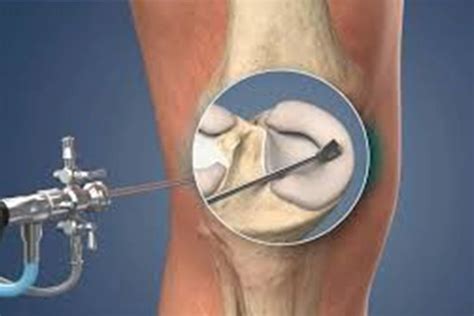Triamcinolone acetonide cream is a topical corticosteroid used to treat various skin conditions, including eczema, dermatitis, and allergies. It belongs to the class of medications known as corticosteroids, which work by reducing inflammation, redness, and itching associated with these conditions. The cream formulation allows for direct application to the affected area, providing localized relief from symptoms.
How Triamcinolone Acetonide Cream Works
When applied topically, triamcinolone acetonide cream penetrates the skin and interacts with the body’s natural corticosteroid receptors. This interaction triggers a series of responses that ultimately lead to the reduction of inflammation and the alleviation of symptoms associated with eczema and other skin conditions.
The specific mechanisms of action involve:
- Inhibition of Inflammatory Mediators: Triamcinolone acetonide reduces the production of inflammatory chemicals, such as prostaglandins and leukotrienes, which contribute to the development of redness, swelling, and itching.
- Vasoconstriction: The cream causes blood vessels to constrict, reducing blood flow to the affected area and thereby decreasing swelling and redness.
- Immunosuppression: By suppressing the immune response, triamcinolone acetonide cream reduces the activity of immune cells that contribute to inflammation and tissue damage.
Benefits of Using Triamcinolone Acetonide Cream for Eczema Relief
Triamcinolone acetonide cream offers several benefits for individuals suffering from eczema, including:
- Rapid Relief from Symptoms: The cream provides quick relief from itching, redness, and inflammation, improving the quality of life for individuals with eczema.
- Targeted Treatment: Topical application allows for targeted treatment of affected areas, reducing the risk of systemic side effects associated with oral corticosteroids.
- Flexibility in Use: Triamcinolone acetonide cream can be used to treat a range of skin conditions, from mild to severe, and can be applied as needed to manage symptoms.
- Convenient Application: The cream formulation is easy to apply and can be used in conjunction with other topical treatments or moisturizers to enhance its effectiveness.
Potential Side Effects and Precautions
While triamcinolone acetonide cream is generally well-tolerated, potential side effects may include:
- Skin Thinening: Prolonged use of the cream can lead to skin thinning, especially when used on sensitive areas or in high concentrations.
- Allergic Reactions: Some individuals may experience allergic reactions, such as redness, itching, or burning, when using triamcinolone acetonide cream.
- Systemic Absorption: Although rare, systemic absorption of the cream can occur, particularly when used over large areas or for extended periods.
To minimize the risk of side effects, it is essential to:
- Follow the Recommended Dosage: Use the cream as directed by your healthcare provider or according to the product label.
- Monitor Your Skin: Regularly inspect your skin for signs of side effects or changes in skin condition.
- Consult Your Healthcare Provider: If you experience any unusual symptoms or concerns, consult your healthcare provider for guidance.
Comparing Triamcinolone Acetonide Cream to Other Eczema Treatments
When considering treatment options for eczema, it is essential to evaluate the effectiveness and safety of different therapies. Triamcinolone acetonide cream can be compared to other topical corticosteroids, such as hydrocortisone cream, or non-steroidal treatments, like pimecrolimus cream.
Key Differences:
- Potency: Triamcinolone acetonide cream is considered a medium- to high-potency corticosteroid, making it more effective for severe eczema symptoms.
- Formulation: The cream formulation allows for easy application and targeted treatment of affected areas.
- Side Effect Profile: While all corticosteroids carry some risk of side effects, triamcinolone acetonide cream is generally well-tolerated when used as directed.
Case Study: Real-World Application of Triamcinolone Acetonide Cream
A 35-year-old woman with a history of atopic dermatitis experienced a severe flare-up on her hands and feet. She applied triamcinolone acetonide cream to the affected areas twice daily for two weeks, resulting in significant improvement in symptoms and quality of life.
It is crucial to note that individual results may vary, and what works for one person may not work for another. Consult with your healthcare provider to determine the best treatment plan for your specific needs.
Historical Evolution of Triamcinolone Acetonide Cream
The development of triamcinolone acetonide cream is rooted in the discovery of corticosteroids in the mid-20th century. Since then, researchers have refined the formulation and potency of corticosteroids to create effective treatments for various skin conditions.
Future Trends in Eczema Treatment
As research continues to advance, new treatments and therapies are emerging to manage eczema symptoms. Some promising areas of development include:
- Biologics: Targeted therapies that address specific aspects of the immune response, offering potential for improved efficacy and reduced side effects.
- Gene Therapy: Innovative approaches that aim to modify the genetic factors contributing to eczema, providing a potential cure for the condition.
- Nanotechnology: The use of nanoparticles to deliver medications and other therapies directly to the affected skin cells, enhancing treatment efficacy and reducing side effects.
Step-by-Step Guide to Using Triamcinolone Acetonide Cream
- Wash your hands before applying the cream.
- Apply a thin layer of cream to the affected area.
- Gently massage the cream into the skin until fully absorbed.
- Repeat as directed by your healthcare provider or according to the product label.
Conclusion
Triamcinolone acetonide cream is a effective treatment option for eczema, offering rapid relief from symptoms and targeted treatment of affected areas. By understanding how the cream works, its benefits, and potential side effects, individuals can make informed decisions about their treatment plan. As research continues to advance, new treatments and therapies are emerging to manage eczema symptoms, providing hope for improved management and potential cures in the future.
What is the recommended dosage for triamcinolone acetonide cream?
+The recommended dosage for triamcinolone acetonide cream varies depending on the individual and the severity of their eczema symptoms. Consult your healthcare provider for personalized guidance.
Can I use triamcinolone acetonide cream on sensitive skin?
+While triamcinolone acetonide cream is generally well-tolerated, it is essential to exercise caution when using it on sensitive skin. Start with a low concentration and gradually increase as needed and under the guidance of your healthcare provider.
How long does it take to see results from using triamcinolone acetonide cream?
+Results from using triamcinolone acetonide cream can vary depending on the individual and the severity of their eczema symptoms. Some people may experience rapid relief within a few days, while others may take longer to notice improvements.


